This article was co-authored by Daniel Barrett, MD. Dr. Daniel Barrett is a Board Certified Plastic Surgeon and the owner of Barrett Plastic Surgery based in Beverly Hills, California. With over six years of plastic surgery experience, Dr. Barrett specializes in aesthetic and reconstructive surgery of the face, nose and body. He has developed detailed scar management protocols and closure techniques to reduce the appearance of scars for his patients. Dr. Barrett obtained a BS from James Madison University and an MD along with an MS in Physiology and and an MHA (Masters of Health Administration) from the Medical College of Virginia in Richmond.
There are 11 references cited in this article, which can be found at the bottom of the page.
wikiHow marks an article as reader-approved once it receives enough positive feedback. In this case, several readers have written to tell us that this article was helpful to them, earning it our reader-approved status.
This article has been viewed 127,837 times.
Breast augmentation is one of the most commonly performed plastic surgery procedures in the United States. Breast implants are surgically placed to increase the natural size of breasts or as a reconstructive procedure after mastectomy. If you have decided to get breast implants, make sure that you are knowledgeable about the best practices to follow while recovering from the surgery.
Steps
Recovering Immediately After the Surgery
-
1Rest in the recovery room immediately after surgery. Immediately following your surgery, your doctor will take you to recovery room where you are placed in a semi-upright reclining position to help keep the swelling down.[1]
- In the recovery room, your breasts are wrapped in gauze dressings to keep the surgical site sterile.
- You may also be asked to wear a supportive bra to aid in the recovery and the bandages may be changed just before you go home.
- You will also be given a pain medication, such as oxycodone or hydrocodone, to manage pain and discomfort.
-
2Ask for homecare instructions from your doctor. It is helpful to bring someone with you to go over any discharge instructions with the nurse. The anesthetic and pain medications that are used during and after the surgery can make it hard to remember any instructions that are discussed. Before you leave the surgical center, be sure to ask for written aftercare directions so that you know exactly what you and any caretakers should be doing during your recovery period.
- For example, you should know how long you need to wear the gauze dressings after the surgery, if you need to change them and whether you need to remove the dressing before a shower or keep them covered while showering.
- Sometimes, your doctor may advise you not to remove the surgical dressing at all, as this is done during your postoperative appointment.[2]
- Your doctor will also go over the activities you should avoid that can put your recovery and the implants at risk.[3]
Advertisement -
3Arrange a ride home. Breast augmentation is a major surgical procedure and you should not drive yourself home afterwards. If you have not arranged a ride to home, take a taxi to the surgical center and back home.
- You will most be given pain medications that can impact your ability to drive.
- Also, make sure you and your driver have plenty of time to get back home. The last thing you need is a bumpy ride and a seatbelt digging into your sore chest area.
Healing Breasts After Augmentation Surgery
-
1Avoid strenuous activity. During your recovery period, avoid engaging in strenuous activity for at least a week after your surgery.[4] Engaging in strenuous activity too soon can lead to injury and compromise the integrity of the surgical incisions.
- Make sure that you do not schedule any important appointments or strenuous activity within two weeks of your breast augmentation surgery.
- Do not engage in any activity or exercise that requires you to use or engage your upper chest muscles. This includes activities such as jumping, running, swimming, tennis and horseback riding.[5] '
- In particular, you should not swim or soak in water for three to four weeks after surgery. This can interfere with the healing process of your scars and cause infection.[6] If you do swim after this waiting period, be sure to change out of your suit (or bikini top) quickly, or put on a dry one, so that you are not soaking your still healing incisions.[7]
- Do not push, pull, or carry anything heavy for at least one week after your surgery. Ask your doctor what is a weight you can safely pick up and carry.[8]
-
2Wear a supportive sports bra. After a breast augmentation surgery, a supportive bra (such as a sports bra) becomes your best friend that helps you adjust to the new size of your breasts and aids in the recovery.[9]
- Use an unlined sports bra during the first few weeks of your recovery period, as underwire can irritate your incision site.
- Visit a department store or lingerie shop to get specially fitted for a sports bra to support your new breasts.[10]
- Although you may need to replace all your old bras, you should wait at least one month before shopping for new traditional bras and stick with the sports bra.
-
3Take pain medications. Over-the-counter pain medications (such as acetaminophen) will help you manage your pain and discomfort after the surgery, but check with your doctor first to make sure it's okay to take them. In some cases, your doctor may also prescribe prescription pain medication for the first few days/weeks.
- Some doctors may recommend more natural pain relievers, like arnica, CBD, and fish oil.[11]
- Whether you opt for over-the-counter or prescription medications, make sure that you take all medications responsibly and according to directions.
- It is generally recommended to avoid aspirin-containing pain medication for 10 – 14 days after surgery, as it can thin the blood and increase bleeding.
- Anti-inflammatory medications can also help with inflammation and swelling.
- You may also want to ask your doctor about an injectable, time-released medication called Exparel, which can help manage your pain over a longer period.[12]
-
4Get plenty of rest. Recovery from breast augmentation surgery takes time and lots of rest. Besides avoiding strenuous activities, you should also allow yourself to take it easy for the first few weeks.[13]
- While you can return to work within a few days of your surgery, it is advisable to wait one to two weeks to return to work and regular activities Additionally, you shouldn't try to work from home until you're fully recovered.[14]
-
5Keep your follow up appointments. Postoperative appointments are an important part of a successful recovery from breast augmentation surgery. Make sure you go to all your scheduled appointments.
-
6Apply a moisturizer that contains shea butter to your breasts. After the initial recovery period and your post-surgery checkup, ask your doctor whether you should start applying moisturizer over the breasts and the incisions.
- The implants can cause your skin to stretch. By applying shea butter, you may promote proper healing and prevent stretch marks.
-
7Sleep on your back for up to 10 days after surgery. Besides your breasts being sore after the surgery, the incisions are also vulnerable and you should not put any added strain on them. Thus, it is recommended you sleep on your back for a few weeks after the surgery.
- During your post-surgery checkup, ask your doctor if it is safe to sleep on your stomach again; however, you may still opt to sleep on your back or side if your breast tissue continues to be sore or it is uncomfortable to sleep on your stomach.
-
8Start a massage regimen. After the stitches have been removed, a light manual massage helps break up any scar tissue that might form after the surgery. Massage may also help your implants to reach their proper position and may help your body to adjust to your new implants faster.[17]
- Before you start any massage regimen, consult your doctor and ask if it is safe.
- Gently use your hands to massage your breasts for 20 minutes at a time twice, using the opposite hand to massage the opposite breast.[18]
- Only do the massage regimen if there is no pain or discomfort. If you experience pain during the massage, stop immediately.
-
9Recognize signs of complications and when to seek help. Make sure you know the warning signs following your surgery. Contact your doctor immediately if you suffer from any of the following symptoms:
- Fever (greater than 100.4°F or 38°C), pain, skin discoloration, inflamed tissue, and smelly wounds are indications of infection and require immediate treatment.[19]
- Shooting pain, uneven lumps, and deflated breast tissues are possible signs of failure from the implants and should be inspected by your doctor as soon as possible.[20]
-
10Understand the long-term safety and expectations. Breast implants typically last for several years, even lifetime, but you should be aware of certain factors that can impact the integrity of the implants. Keep the following factors in mind:
Healing with Recovery Exercises
-
1Do arm and shoulder exercises. Once your initial recovery period, you should start doing exercises that target your arms and shoulders. These allow you to regain arm/shoulder movements and prevent scar tissue formation. Start by doing exercises five times a day until you have regained a full range of motion.[23]
- Talk to your doctor before engaging in any exercises.
- You should feel gentle stretch during the exercises described.
- If you experience pain, stop or reduce the range of motion to a level that you can perform without feeling pain.
-
2Try shoulder rolls. The shoulder rolls are gentle exercises that stretch the chest and shoulder muscles.[24]
- Sit with your back straight and arms straight on your side with fingers pointing to the floor.
- Roll your shoulders in a circular motion moving them up, forward, down, back, and up again.
- The movement should come from the shoulder, while the arms and elbows stay straight.
- Do 10 rolls to one direction, then switch directions and do another 10 rolls on both shoulders.
- Start with small circles and then increase the diameter as you can.
-
3Try shoulder wings. This exercise helps you regain outward movement of your shoulder and you can perform it either sitting or standing.[25]
- Fold your hands to your chest so that your elbows point downward.
- Holding your hands against the chest, raise your elbows to the side like a “chicken wing.”
- Hold for a moment, then lower the elbows and repeat 10 times.
- As your range of motion improves, try lifting the elbows higher and higher.
-
4Do arm circles. This exercise helps increase the range of motion in your shoulders. Do this exercise one arm at a time either sitting or standing.[26]
- With your back straight, raise one arm to the side as high as you can, keeping your elbow straight.
- Start making small circles in the air with your straight arm. The movement should come from the shoulder and not from the elbow.
- Perform 10 circles to forward and 10 circles backwards. Then switch to the other arm.
- Start with small circles and increase their size when you feel comfortable and experience no sharp pain.
-
5Try the "W" exercise. The W exercise involves making the W shape with your arms. Raise your arms out to the side, fingers pointing up and elbows pointing down, with the palms of your hands facing forward.[27]
- Pushing your elbows down toward your back, pitch your shoulder blades together.
- Hold the position for a moment, then release and repeat at least 10 times.
- If you feel pain or discomfort, stop or reduce the movement.
-
6Try the hands behind your neck exercise. This resembles the chicken wing exercise but instead of lifting your elbows up, you bring them forward and back.[28]
- Place your hands behind your neck with your elbows pointing to the side.
- Slowly bring your elbows forward, nearly touching them together.
- Hold for a few seconds, then move your elbows backward as far as you can to feel the stretch in your chest, arms and shoulders.
-
7Try wall crawls. During this exercise, you stand next to a wall and “walk” your hands up and down against the wall. This exercise can be done forward facing and side facing the wall.[29]
- During the forward facing crawl, place both hands against the wall and begin to walk your fingers up as high as you can to feel a stretch but no pain.
- Walk back down and repeat.
- For the side crawl, turn one side toward the wall and perform a wall crawl with one had at a time.
Expert Q&A
-
QuestionWhat is the fastest way to recover from breast augmentation?
 Daniel Barrett, MDDr. Daniel Barrett is a Board Certified Plastic Surgeon and the owner of Barrett Plastic Surgery based in Beverly Hills, California. With over six years of plastic surgery experience, Dr. Barrett specializes in aesthetic and reconstructive surgery of the face, nose and body. He has developed detailed scar management protocols and closure techniques to reduce the appearance of scars for his patients. Dr. Barrett obtained a BS from James Madison University and an MD along with an MS in Physiology and and an MHA (Masters of Health Administration) from the Medical College of Virginia in Richmond.
Daniel Barrett, MDDr. Daniel Barrett is a Board Certified Plastic Surgeon and the owner of Barrett Plastic Surgery based in Beverly Hills, California. With over six years of plastic surgery experience, Dr. Barrett specializes in aesthetic and reconstructive surgery of the face, nose and body. He has developed detailed scar management protocols and closure techniques to reduce the appearance of scars for his patients. Dr. Barrett obtained a BS from James Madison University and an MD along with an MS in Physiology and and an MHA (Masters of Health Administration) from the Medical College of Virginia in Richmond.
Board Certified Plastic Surgeon While you should avoid strenuous activity post-surgery, going for walks can improve your blood flow and aid the healing process.
While you should avoid strenuous activity post-surgery, going for walks can improve your blood flow and aid the healing process. -
QuestionHow long do breast implants take to heal?
 Daniel Barrett, MDDr. Daniel Barrett is a Board Certified Plastic Surgeon and the owner of Barrett Plastic Surgery based in Beverly Hills, California. With over six years of plastic surgery experience, Dr. Barrett specializes in aesthetic and reconstructive surgery of the face, nose and body. He has developed detailed scar management protocols and closure techniques to reduce the appearance of scars for his patients. Dr. Barrett obtained a BS from James Madison University and an MD along with an MS in Physiology and and an MHA (Masters of Health Administration) from the Medical College of Virginia in Richmond.
Daniel Barrett, MDDr. Daniel Barrett is a Board Certified Plastic Surgeon and the owner of Barrett Plastic Surgery based in Beverly Hills, California. With over six years of plastic surgery experience, Dr. Barrett specializes in aesthetic and reconstructive surgery of the face, nose and body. He has developed detailed scar management protocols and closure techniques to reduce the appearance of scars for his patients. Dr. Barrett obtained a BS from James Madison University and an MD along with an MS in Physiology and and an MHA (Masters of Health Administration) from the Medical College of Virginia in Richmond.
Board Certified Plastic Surgeon It depends, but generally anywhere from a few days to a week. During this time you'll want to relax and avoid doing any work or strenuous activity.
It depends, but generally anywhere from a few days to a week. During this time you'll want to relax and avoid doing any work or strenuous activity.
Warnings
- Plastic surgery isn't an exact science. While the majority of patients are happy with their results, there is no guarantee that your surgery will be successful. Sometimes a single surgery will not achieve optimal results, so another surgical procedure may be necessary.⧼thumbs_response⧽
- Do not drive for 24 to 48 hours after surgery. You will have residual grogginess from the anesthesia and may be sore, which could interfere with your ability to drive safely.⧼thumbs_response⧽
- Keep your scars away from sun exposure for at least nine months to a year after surgery.⧼thumbs_response⧽
References
- ↑ http://www.nhs.uk/Conditions/Breast-implants/Pages/Recovery.aspx
- ↑ https://myhealth.alberta.ca/Health/aftercareinformation/pages/conditions.aspx?hwid=tw12680
- ↑ http://www.nhs.uk/Conditions/Breast-implants/Pages/Recovery.aspx
- ↑ Daniel Barrett, MD. Board Certified Plastic Surgeon. Expert Interview. 23 July 2020.
- ↑ https://www.plasticsurgery.org/news/blog/breast-augmentation-recovery-what-you-need-to-know
- ↑ Daniel Barrett, MD. Board Certified Plastic Surgeon. Expert Interview. 23 July 2020.
- ↑ https://www.kooxdiving.com/en/can-you-swim-with-stitches/
- ↑ https://www.plasticsurgery.org/news/blog/breast-augmentation-recovery-what-you-need-to-know
- ↑ https://www.nhs.uk/conditions/cosmetic-procedures/breast-enlargement/
- ↑ http://www.dbreath.com/blog/caring-for-your-breast-implants-three-things-to-know-now/
- ↑ Daniel Barrett, MD. Board Certified Plastic Surgeon. Expert Interview. 23 July 2020.
- ↑ http://www.docshop.com/education/cosmetic/breast/implants/recovery
- ↑ http://www.nhs.uk/Conditions/Breast-implants/Pages/Recovery.aspx
- ↑ Daniel Barrett, MD. Board Certified Plastic Surgeon. Expert Interview. 23 July 2020.
- ↑ http://www.docshop.com/education/cosmetic/breast/implants/recovery
- ↑ http://www.docshop.com/education/cosmetic/breast/implants/recovery
- ↑ http://www.docshop.com/education/cosmetic/breast/implants/recovery
- ↑ http://www.docshop.com/education/cosmetic/breast/implants/recovery
- ↑ http://www.nhs.uk/Conditions/Breast-implants/Pages/Recovery.aspx
- ↑ http://www.nhs.uk/Conditions/Breast-implants/Pages/Recovery.aspx
- ↑ http://www.plasticsurgery.org/cosmetic-procedures/breast-augmentation.html?sub=Breast+augmentation+risks+and+safety#content
- ↑ http://www.plasticsurgery.org/cosmetic-procedures/breast-augmentation.html?sub=Breast+augmentation+risks+and+safety#content
- ↑ https://www.mskcc.org/cancer-care/patient-education/exercises-after-breast-surgery
- ↑ https://sunnybrook.ca/content/?page=mastectomy-exercises-after-surgery
- ↑ https://sunnybrook.ca/content/?page=mastectomy-exercises-after-surgery
- ↑ https://www.mskcc.org/cancer-care/patient-education/exercises-after-breast-surgery
- ↑ https://www.mskcc.org/cancer-care/patient-education/exercises-after-breast-surgery
- ↑ https://www.mskcc.org/cancer-care/patient-education/exercises-after-breast-surgery
- ↑ https://www.mskcc.org/cancer-care/patient-education/exercises-after-breast-surgery

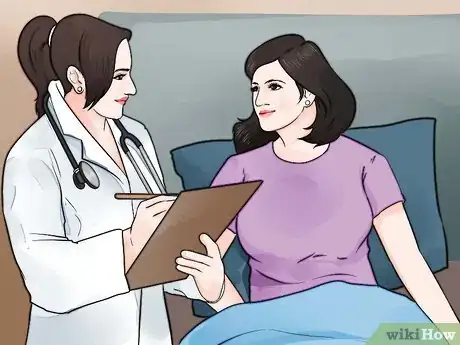

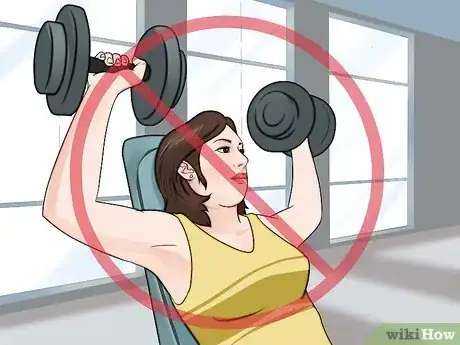

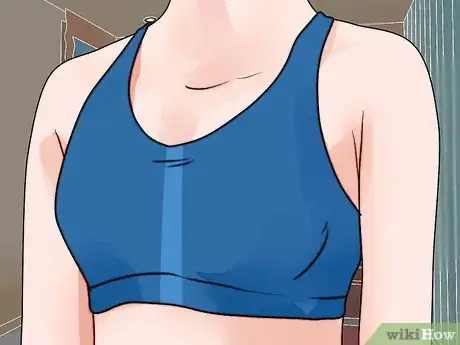
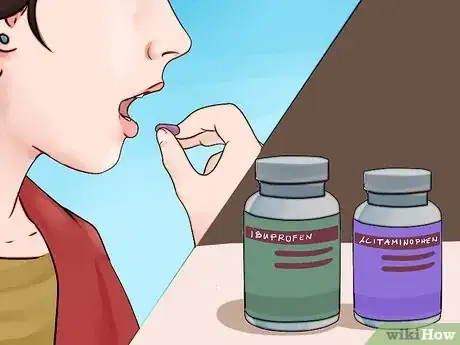
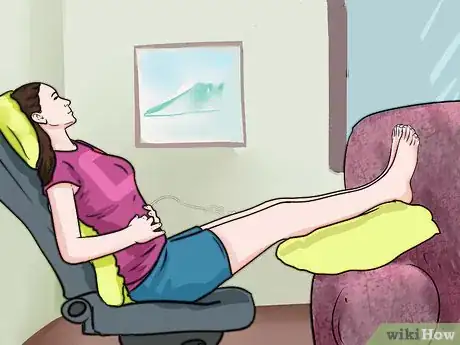
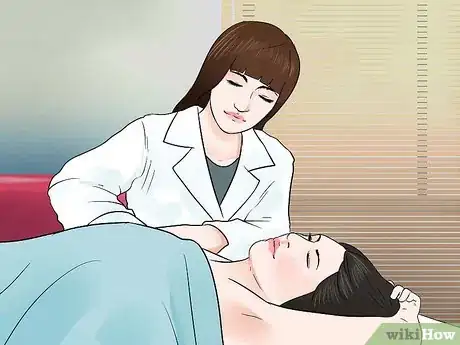
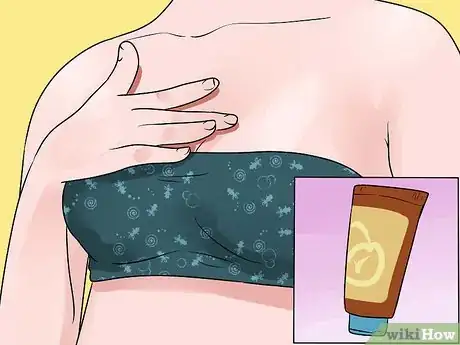

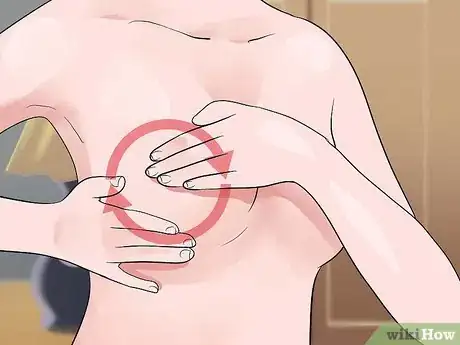

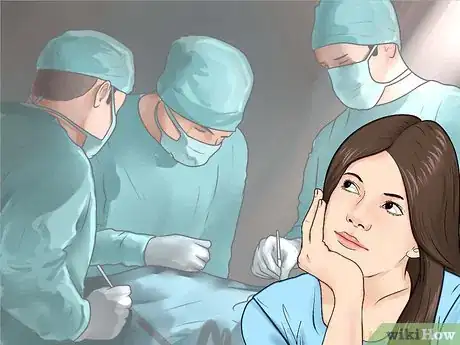

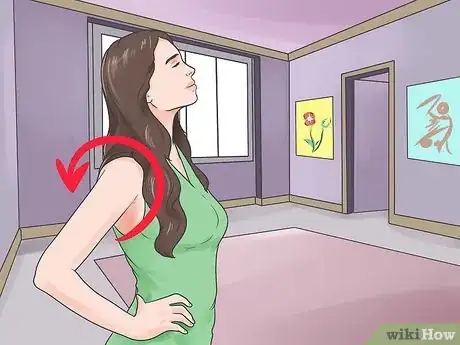
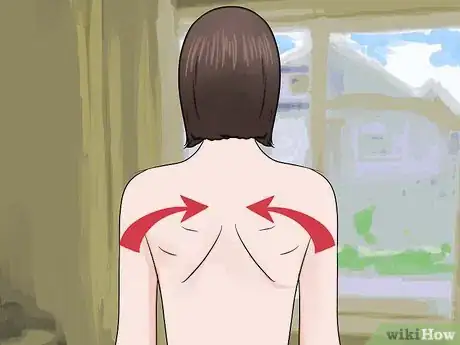
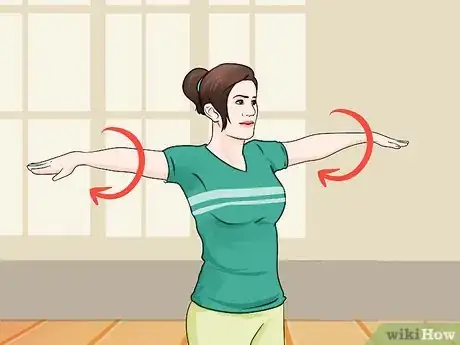
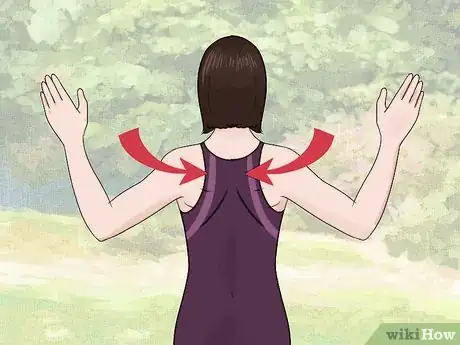
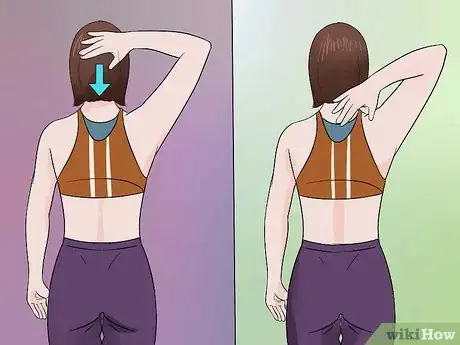


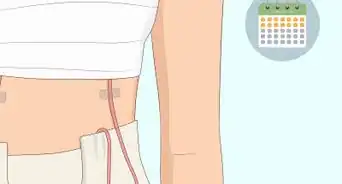


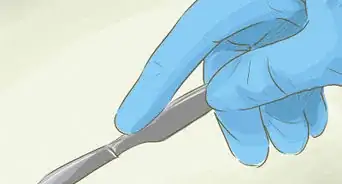
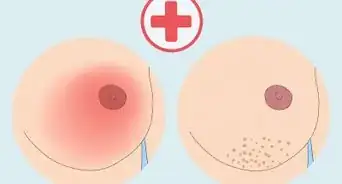





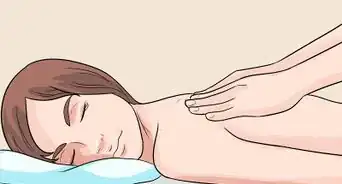













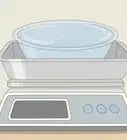



































Medical Disclaimer
The content of this article is not intended to be a substitute for professional medical advice, examination, diagnosis, or treatment. You should always contact your doctor or other qualified healthcare professional before starting, changing, or stopping any kind of health treatment.
Read More...